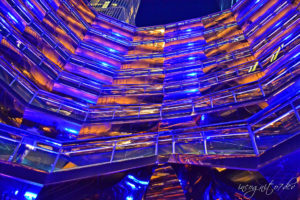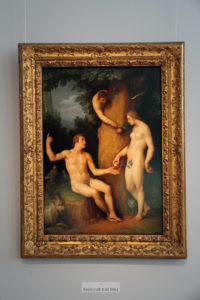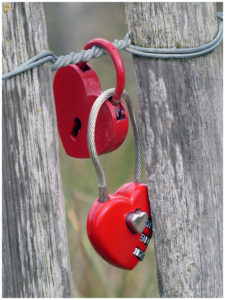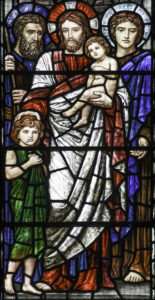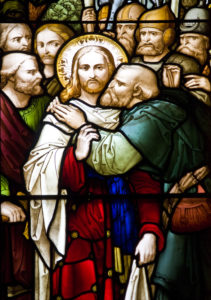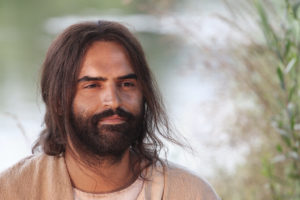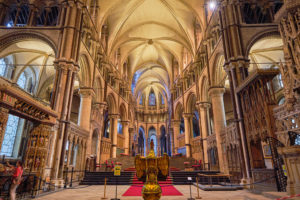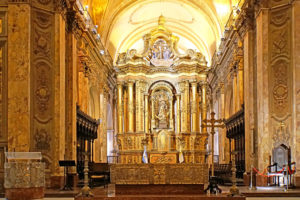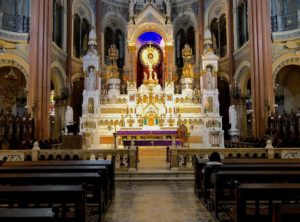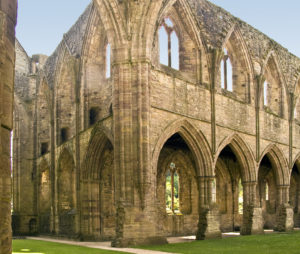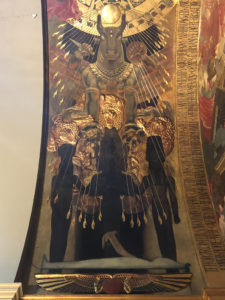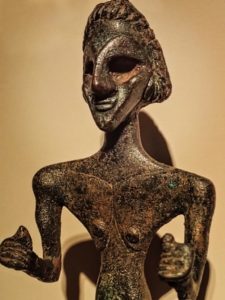Praise to the Lord, the Almighty, the King of creation!
O my soul, praise him, for he is your health and salvation!
Come, all who hear; now to his temple draw near,
join me in glad adoration.
– Joachim Neander (1650-1680), from the German “Praise to the Lord” (1680)
 The only approach to morality that is consistent with the Godhead’s truth is based in divine love alone. From earliest prehistory, human-made gods have imposed various behavioral laws, but the genuine Godhead gives us no laws beyond God’s perfect Law of Love. Jesus makes that fact plain in the Gospels when He says, “‘You shall love the Lord your God with all your heart, and with all your soul, and with all your mind.’ This is the great and foremost commandment. The second is like it, ‘You shall love your neighbor as yourself.’ On these two commandments depend the whole Law and the Prophets” (MT 22:37-40).
The only approach to morality that is consistent with the Godhead’s truth is based in divine love alone. From earliest prehistory, human-made gods have imposed various behavioral laws, but the genuine Godhead gives us no laws beyond God’s perfect Law of Love. Jesus makes that fact plain in the Gospels when He says, “‘You shall love the Lord your God with all your heart, and with all your soul, and with all your mind.’ This is the great and foremost commandment. The second is like it, ‘You shall love your neighbor as yourself.’ On these two commandments depend the whole Law and the Prophets” (MT 22:37-40).
It is impossible to establish a love-based morality while any written moral law exists, since the written law always takes precedence. While any moral laws are in place, love can be nothing more than the optional nicety it has become for us now. And all written moral laws are flawed, since there is no written law to which we cannot soon think of some love-based exceptions! We have never had a morality based on written laws that was right in all situations. So Jesus makes it clear in the Gospels that He is moving us beyond all black-letter laws by replacing the law-based Old Testament with the Godhead’s New Testament Law of Love. When we study the Lord’s Gospel words, and we then endeavor to follow His teachings, we realize that divine love is possible only when we are free of all other constraints.
 But what about secular laws? We cannot live in civilization without obeying those! So Jesus tells us how to handle that conflict. When the Pharisees try to trap him into speaking against paying Caesar’s poll-tax, He says, “‘Why are you testing Me, you hypocrites? Show Me the coin used for the poll-tax.’ And they brought Him a denarius. And He said to them, ‘Whose image and inscription is this?’ They said to Him, ‘Caesar’s.’ Then He said to them, ‘Then pay to Caesar the things that are Caesar’s; and to God the things that are God’s’” (MT 22:18-21). Bravo, Jesus! We enjoy this little interplay as more evidence of His cleverness, but He is making an important point. We can – and we must – keep the things of this world, the human-made laws and the grubbing for survival, entirely separate from our sacred effort to ever better practice God’s perfect divine love.
But what about secular laws? We cannot live in civilization without obeying those! So Jesus tells us how to handle that conflict. When the Pharisees try to trap him into speaking against paying Caesar’s poll-tax, He says, “‘Why are you testing Me, you hypocrites? Show Me the coin used for the poll-tax.’ And they brought Him a denarius. And He said to them, ‘Whose image and inscription is this?’ They said to Him, ‘Caesar’s.’ Then He said to them, ‘Then pay to Caesar the things that are Caesar’s; and to God the things that are God’s’” (MT 22:18-21). Bravo, Jesus! We enjoy this little interplay as more evidence of His cleverness, but He is making an important point. We can – and we must – keep the things of this world, the human-made laws and the grubbing for survival, entirely separate from our sacred effort to ever better practice God’s perfect divine love.
But how do we actually go about developing a purely love-based morality? It is only when we ask the question that we see how very different a love-based morality is from one that is based in black-letter laws. We are used to laws. We find their certainty comforting. Our old way of doing morality – starting with the applicable laws, and then looking for possible love-based exceptions – felt easy and automatic. And a love-based morality will feel easy, too, once we have become more used to it. In fact, I think we are going to find that a love-based morality makes discerning the difference between right and wrong a lot easier! Of course, we might then be seeing that what is right to do in any given situation is not what we would prefer to do. But still, the moral choice will be clear! It is time for us to test-drive an entirely laws-free morality that is based in the love that Jesus taught.
 This need to operate entirely from love applies to all our daily decisions. But the simplest way to illustrate the difference that a love-based morality can make in our lives is to consider how we would make entirely love-based sexual decisions. Our decisions about sex are full of ethical thorns, so they are a great place for us to begin to think concretely about a love-based morality. Let’s look now at three basic sex-related decisions, and consider them entirely from the viewpoint of a laws-free morality that is based in love. We’ve got to start somewhere!
This need to operate entirely from love applies to all our daily decisions. But the simplest way to illustrate the difference that a love-based morality can make in our lives is to consider how we would make entirely love-based sexual decisions. Our decisions about sex are full of ethical thorns, so they are a great place for us to begin to think concretely about a love-based morality. Let’s look now at three basic sex-related decisions, and consider them entirely from the viewpoint of a laws-free morality that is based in love. We’ve got to start somewhere!
Heterosexual Behavior
The decision to be intimate with someone is a complex one. Since there are no longer black-letter laws, it doesn’t matter whether a couple is legally married to one another; but still, we have a lot to consider! Let’s look at the three core love-based questions that we will first have to answer in the affirmative:
- Are we willing to rear a resulting child? To kill a fetus for the sake of convenience can never be seen as a love-based choice. So the decision to have sexual intercourse, even with contraceptive use, will always be the simultaneous decision that we are prepared to lovingly co-parent with this partner for the next twenty years; or alternatively, that we are prepared to find the resulting child good adoptive parents. For both birth-parents, that possible child’s welfare is their love-based responsibility from before its conception.
- Are we sure that no outside parties will be harmed by our actions? If
 either party is involved with someone who would see what we mean to do as an act of betrayal, then that other relationship will first need to be comfortably resolved. And if either party is co-parenting a minor child with someone else, then the risk of disrupting that child’s life seems to me in a purely love-based morality to trump every reason that we might have for proceeding to be sexual with this partner!
either party is involved with someone who would see what we mean to do as an act of betrayal, then that other relationship will first need to be comfortably resolved. And if either party is co-parenting a minor child with someone else, then the risk of disrupting that child’s life seems to me in a purely love-based morality to trump every reason that we might have for proceeding to be sexual with this partner! - Are both parties mentally and emotionally able to make love-based decisions about sexual activity? People who are mentally handicapped, too young, emotionally immature, or so deeply indoctrinated into a religion as to be unable to enter this particular sexual relationship without guilt and fear must always be protected by the healthier party from the emotional damage that can result if you proceed.
There may also be other considerations that we will come to see are mandatory for a sexual morality based in love, but these are the three that first come to mind. Few people even consider black-letter laws about intimate behavior anymore, so in thinking this through we are not only getting rid of the laws that nobody follows anyway, but much more importantly we are creating a healthier and entirely love-based morality that can much better take their place.
Homosexual Behavior
Absent pregnancy, the same questions that apply to deciding on heterosexual activity are applicable when the intended participants are of the same gender. Here the thorniest moral issue is not for the participants, but rather it is the fact that so many Christians still feel free to judge and condemn people who are sexually attracted to their own gender. And it is impossible to follow the teachings of Jesus while you are presuming to judge anyone! It doesn’t matter how you personally feel about homosexuality. If you ever judge anyone for anything at all, then you are acting in direct  contravention of the plainspoken teachings of Jesus. The Lord says, “Do not judge, and you will not be judged” (LK 6:37). He says, “For not even the Father judges anyone, but He has given all judgment to the Son, so that all will honor the Son even as they honor the Father” (JN 5:22-23). Then on a different day, with different Temple guards, He tells us that He doesn’t judge us, either. He says, “If anyone hears My sayings and does not keep them, I do not judge him” (JN 12:47). The Lord cannot possibly have made any plainer the fact that neither God nor Jesus ever judges anyone! And those that we used to think were dead confirm this fact as well. The only judgment is by ourselves alone. And when there is no divine judgment, then surely Christians have no right to judge anyone for anything. Yes, in the United States you have a Constitutional right to refuse to bake a cake for a homosexual wedding. But if you are calling yourself a follower of Jesus, just know that it is His frank request that you rise above judgment, smile, and lovingly bake that cake.
contravention of the plainspoken teachings of Jesus. The Lord says, “Do not judge, and you will not be judged” (LK 6:37). He says, “For not even the Father judges anyone, but He has given all judgment to the Son, so that all will honor the Son even as they honor the Father” (JN 5:22-23). Then on a different day, with different Temple guards, He tells us that He doesn’t judge us, either. He says, “If anyone hears My sayings and does not keep them, I do not judge him” (JN 12:47). The Lord cannot possibly have made any plainer the fact that neither God nor Jesus ever judges anyone! And those that we used to think were dead confirm this fact as well. The only judgment is by ourselves alone. And when there is no divine judgment, then surely Christians have no right to judge anyone for anything. Yes, in the United States you have a Constitutional right to refuse to bake a cake for a homosexual wedding. But if you are calling yourself a follower of Jesus, just know that it is His frank request that you rise above judgment, smile, and lovingly bake that cake.
Non-Monogamous Sexual Behavior
Sexual relationships among multiple partners seem to be more common now, to the point where psychologists are urging us to accept non-monogamy as a lifestyle choice. A surprising number of people are engaged in polyamory, or in open marriages, or even in stable households that contain more than two cohabiting adults. And without any black-letter moral laws in place, such alternative living arrangements can be perfectly moral. But they still pose some much-increased ethical risks! The decision to enter into any form of non-monogamous sexual relationship is compounded by the much-increased chance of jealousies and general instability that must be lovingly addressed, and by the fact that many more outside people are likely to be affected by it. At the very least, every person involved will need to satisfactorily answer the three questions given above.
 As you can see, a purely love-based morality can be simple to apply and seems to make more sense than does one that is based in rigid laws. It surely works a lot better than trying to live by behavioral laws that require us to always be on the lookout for all the possible love-based exceptions!
As you can see, a purely love-based morality can be simple to apply and seems to make more sense than does one that is based in rigid laws. It surely works a lot better than trying to live by behavioral laws that require us to always be on the lookout for all the possible love-based exceptions!
Next week we’ll pause to celebrate the Reason for the Season. Then we’ll resume this process of learning to ever better practice the purely love-based morality that Jesus taught.
Praise to the Lord! O let all that is in me adore him!
All that has life and breath, come now with praises before him.
Let the Amen sound from his people again;
gladly forever adore him.
– Joachim Neander (1650-1680), from the German “Praise to the Lord” (1680)





